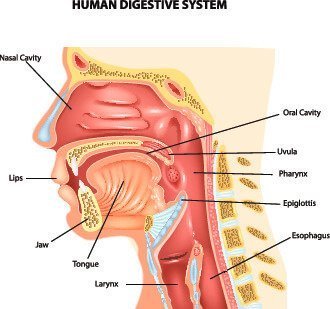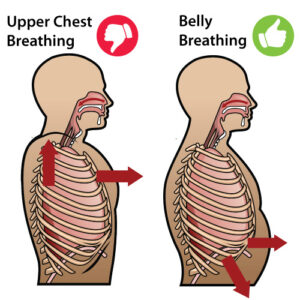

Imagine sitting hunched over your laptop, shoulders forward, chin jutting out—a classic case of “nerd neck,” or, in medical terms, forward head posture.
This posture does not just look a bit awkward; it can restrict airflow in your throat, leading to a whole range of issues, from shallow breathing to sleep disturbances.
In this article, we shall explore the science behind why a slouched, forward head posture impacts your throat airflow, the anatomy involved, and some real-life scenarios that might sound a little too familiar.
Let us dive into the mechanics and science of what is really going on when nerd neck meets your throat.
Article Contents:
- What is Nerd Neck Posture?
- How Nerd Neck Affects Throat Anatomy
- The Link Between Forward Head Posture and Throat Airflow
- Real-Life Examples of Nerd Neck and Breathing Issues
- The Long-Term Implications of Restricted Throat Airflow
- Scientific Studies on Posture and Airflow Restriction
What is Nerd Neck Posture?
Nerd neck, officially called forward head posture, is a position where the head leans forward, often as a result of excessive screen time or poor desk ergonomics.
The head should ideally be aligned with the spine, but in forward head posture, the head juts forward, shifting its center of gravity.
This posture may feel comfortable at the moment, but over time it puts strain on your cervical spine and affects other systems, including your respiratory function.
How Nerd Neck Affects Throat Anatomy?
When the head is positioned forward, the cervical spine (the neck region) bears an increased load.
A study from The Spine Journal notes that for every inch your head moves forward, it adds up to 10 extra pounds of pressure on your spine.
This forward tilt compresses the muscles and soft tissues around the throat, narrowing the passage and creating less space for airflow.
With less space, there’s increased resistance to airflow, making it harder to breathe fully.
In addition to neck muscles, forward head posture affects the hyoid bone, a U-shaped bone in the neck that plays a crucial role in breathing and swallowing.
Misalignment in the neck can put pressure on this bone, constricting airflow and leading to a feeling of tightness in the throat.
The Link Between Forward Head Posture and Throat Airflow
Research has shown that posture impacts respiratory function.
1. Posture Isn’t Just About Looks—It Affects Breathing:
Forward head posture (FHP), often caused by prolonged screen time or slouching, is not just hard on your neck and back—it directly impacts how you breathe. The alignment of your spine plays a crucial role in respiratory efficiency.
2. Reduced Lung Capacity:
Studies show that FHP can reduce lung capacity by up to 30%. Why? When your head is thrust forward, it compresses the ribcage and restricts the diaphragm’s ability to move downward—essential for deep, efficient breaths. As a result, shallow chest breathing becomes the default.
3. Oxygen Intake Drops:
This reduction in lung expansion means less oxygen enters the bloodstream with each breath. Over time, this can lead to chronic fatigue, dizziness, and even mental fog—your brain simply isn’t getting the oxygen it needs to operate at full speed.
4. Diaphragm Dysfunction:
FHP often leads to an overactive accessory breathing pattern, where smaller muscles in the neck and chest work overtime. This leads to inefficient breathing and contributes to tension headaches and neck strain.
5. Sleep Apnea Worsens:
In more severe cases, especially when lying down, forward head posture causes soft tissues in the throat to collapse inward. This partially blocks the airway, triggering or worsening obstructive sleep apnea—disrupting sleep and oxygen flow.
6. The Long-Term Risk:
Unchecked, these respiratory limitations can contribute to heart strain, poor cognitive performance, and reduced stamina.
Real-Life Examples of Nerd Neck and Breathing Issues
Let me walk you through 2 such classic examples:
Case Study 1: Alex the Programmer
Alex, a 28-year-old software developer, started experiencing difficulty breathing after spending long hours coding.
He did not realize his head-forward posture was restricting his throat’s airflow until he noticed a persistent tightness in his neck.
After visiting a physical therapist, he learned that his poor neck posture was compressing his airway, making it harder to take deep breaths.
Case Study 2: Sarah the Student
Sarah, a college student, would hunch over her laptop to study late at night.
She often felt a tightness in her throat and struggled to catch her breath after reading for hours.
Her doctor explained that her forward head posture was causing airway restriction, and her “study posture” was actually reducing her oxygen intake, contributing to the fatigue she felt during long study sessions.
The Long-Term Implications of Restricted Throat Airflow
Restricted airflow due to poor neck posture is not just uncomfortable—it has lasting health consequences.
Limited oxygen intake over extended periods can lead to oxygen deprivation in muscles and organs, affecting overall health and well-being.
The Journal of Clinical Medicine suggests that continuous low oxygen levels owing to compressed throat tissues, can lead to sleep disturbances and reduce cognitive function, impacting daily productivity and mental clarity.
Over time, restricted airflow and chronic mouth breathing (common in individuals with forward head posture) can also dry out the mouth and throat, leading to sore throats and respiratory infections.
This posture-related airway constriction may eventually lead to or exacerbate obstructive sleep apnea, a serious condition that has been linked to cardiovascular disease and other health risks.
Scientific Studies on Posture and Airflow Restriction
Multiple studies have shed light on the connection between posture and respiratory function.
A pivotal study published in Respiratory Physiology & Neurobiology found that postural alignment plays a significant role in lung function, especially in people who already suffer from respiratory issues.
Another study in The American Journal of Physical Medicine & Rehabilitation showed that forward head posture could decrease lung function even in young adults, indicating that the effects of posture on breathing are not limited to older populations.
One interesting finding from The European Respiratory Journal highlighted that poor posture can exacerbate pre-existing respiratory issues like asthma, as the reduced airway can trigger asthma symptoms and lead to increased use of medication.
My Conclusive Analysis
Poor posture, specifically nerd neck or forward head posture, does more than just give you an achy neck—it can restrict airflow in the throat and reduce oxygen intake, impacting everything from your energy levels to your cognitive function.
The added pressure on the cervical spine, combined with compression around the throat, is a recipe for reduced respiratory efficiency.
Over time, this can translate into chronic health issues, impacting your ability to perform daily tasks with ease.
For those looking to fix forward head posture fast and avoid these issues, stay tuned for a future article where we shall dive into practical tips and exercises to realign your head, free up your airway, and help you breathe a little easier.
References:

